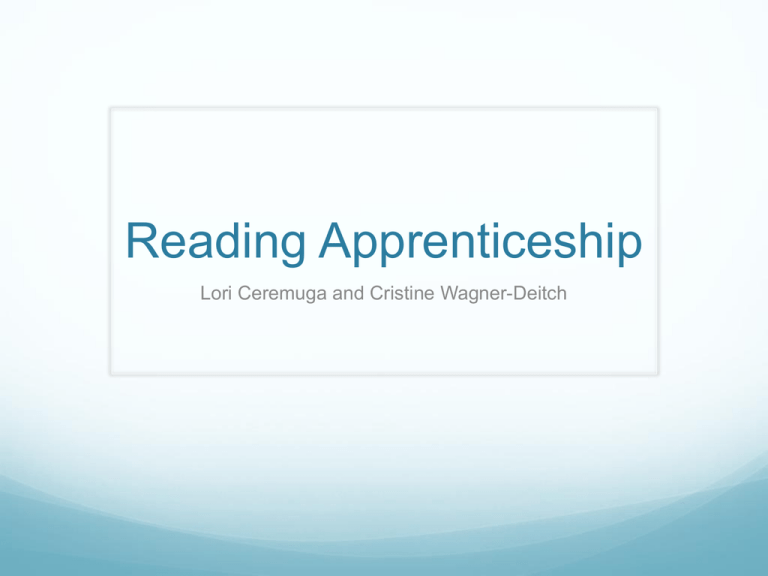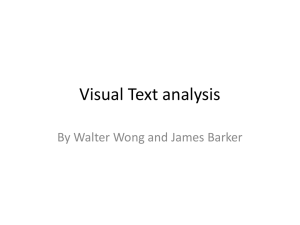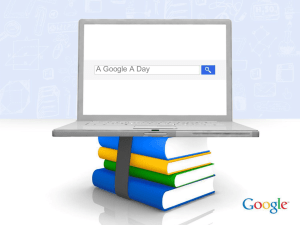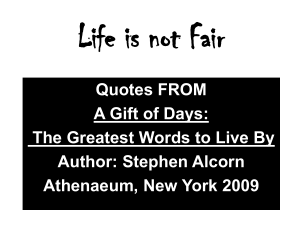Introductory PPT - ReadingApprenticeship-BVIU
advertisement

Reading Apprenticeship Lori Ceremuga and Cristine Wagner-Deitch Literacy through Reading Apprenticeship® WestEd’s Strategic Literacy Initiative (SLI) A professional development and research organization focusing on improving adolescent literacy across content areas using Reading Apprenticeship®, a research-based instructional framework. Reading Apprenticeship® A partnership of expertise between the teacher and students, drawing on what content area teachers know and do as skilled discipline-based readers and on adolescents’ unique and often underestimated strengths. Do You Recognize These Students? Are inexperienced but not beginning readers View reading as only a school based activity Lack confidence are are mentally passive with academic reading Appear to have limited knowledge of topics in school texts. Have limited comprehension when they do read academic texts Are not held accountable for much reading Expend a lot of energy covering up what they don’t understand Keeping Those Children in Mind Write down one or two things you hope to learn over the next four days to help those students Pair-Share Share Out Large Group Exploring the RA Framework Each small group has a quote from Chapter Two of Reading for Understanding. Talk about the Quote: In your small group, take a few minutes to reflect on the quote and talk about it. (5 minutes) Locate the Quote: In your copy of Reading for Understanding, locate the quote on the page referenced in Chapter Two. Read the section that contains the quote. (5 minutes) Make a Poster: In your small group, have another conversation about the quote in context. On your poster, attach your quote and write three or more comments that reflect your responses. When you are done, hang your poster on the wall. (10 minutes) Gallery Walk: Walk around the room and at each poster read the quote and the responses to it. On a sticky note, add your own response or question and attach it to the poster. (10-15 minutes total) Whole Group Discussion: As a whole group, share your thoughts about the interacting dimensions of Reading Apprenticeship classrooms. How has your thinking changed (or not) as a result of these conversations? (10 minutes) Debrief the Process The Content What caught your attention? What issues/questions did you notice as your read and responded? What new ideas did you encounter? The Process What did we do? How did we do it? How did it support your reading/learning? How is it Related to RA? Basic Elements of RA Routines Engaging interest with a schema warm-up (K of the KWL) Supported by group discussion Building rigor and challenge through critical analysis while making entry points for every student to participate Addressing multiple goals of content learning and literacy skills Eliciting independent responses in a safe place Related to RA Continued… Repeated readings to support silent reading fluency When we give students support with reading, they are more likely to engage in the task Negotiating meeting supported by the group – providing further opportunities for deeper learning Norm Setting To work together as a community we need to create some agreements about how we will interact with each other. What do you need in order to think best? Let’s Take a Break 15 Minutes Personal Reading History Refer to Pg. 5 in your handouts Good Reader’s Strategies Genome’s Mysteries Read silently PP 6-9 in your Notebook Make sense of the text – P 10 Complete the worksheet: Capturing the Reading Process Let’s start a Good Reader’s Strategy List – P 11 Digging Into the Dimensions PP 4 in your Binder and 24-25 in Your Books Social Dimension Personal Dimension Cognitive Dimension Knowledge Building Dimension By yourself first– then reflect as a table As a group – one Dimension – Connect what we have done so far today and write them on post-it notes Place that on the poster Lunch 45 minutes What Does and RA Classroom Look Like? Read in your notebook, PP 12-13 What do you do in your content area that fits? Read the background on Rita Jenson’s classroom PP 14-17 Use the Evidence/Interpretation Guide to record observations as we watch Rita Jenson’s class. PP 1819 Strategic Literacy Teacher Pre-Survey On your own – take 15 minutes to complete the survey PP 20-24 Working in Job Alike Groups Discuss Surprises Observations Ideas for use of reading in your content Reflections/Connections Working in Job-Alike Groups Generate a list of “implementation ideas” for your content. Ways to be social.. Ways to make learning personal… Ways to develop mental processes… Ways to engage your content through texts Homework Finish Reading Chpt. 2 PP 22-42 in your Text Book Answer the Questions Provided and be prepared to discuss P 25 in your Notebook Ticket Out the Door Two post-it notes: One Ah’Ha One I still wonder… Place on the chart paper See you tomorrow






